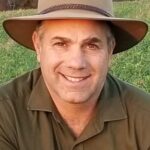Cover Crop Coach:
Soil health must be made
Steve Groff points to management as key to farmers’ success
By Mary Hookham for LASA
Click here to watch Steve Groff’s presentation during LASA’s annual meeting
DARLINGTON, Wis. — Modern management and diversity are the keys to farmers’ success with cover crops, an expert on the subject says.
Steve Groff, an author and entrepreneur known as the Cover Crop Coach, says using these methods and maintaining an open yet determined mindset can help farmers thrive in their conservation efforts.
 “It’s your management that is going to make the difference of whether or not you’ll achieve soil health,” Groff said. “You can’t buy soil health; it has to be made.”
“It’s your management that is going to make the difference of whether or not you’ll achieve soil health,” Groff said. “You can’t buy soil health; it has to be made.”
Groff works with farmers, agronomists, seed specialists and educators to help them recognize how important it is to cover the soil, plan and understand to be successful on the farm, ask questions such as why and how and then pair those answers with practical instruction, and treat cover crops like cash crops.
“We must mimic nature,” he said during Lafayette Ag Stewardship Alliance’s annual meeting in February. “Diversity is found in nature, and we as farmers need to start challenging ourselves to be more diverse in our operations. That’s what will make biological things happen.
Groff began utilizing cover crops in 1982 when he planted cereal rye. Now he grows multiple cover and cash crops.
His goals:
- Lowering pesticide and fertilizer use
- Avoiding commodity crops when possible
- Working toward increased nutrient density and quality
- Finding ways to be profitable
- Always maintaining diversity
“My soil is changing and it’s great to see that,” he said. “The organic matter has increased. It’s measurable and that’s because of management.”
In the commercialized world of agriculture today, one primary source of farmer education comes from retailers whose products are generally geared to control part of nature and boost profits.
“The fear of losing yields is a powerful marketing tool in agriculture,” he said. “Nobody is selling soil health.”
Groff said farmers can do many things to improve the health of the soil in their fields. He advised farmers to think about and understand what they are trying to accomplish. Some potential goals are less erosion, more organic matter, more resiliency during extreme weather and marketing advantages. Think about soil health in the format of a 10-year plan, he said.
“You will not get instant results from the things I’m talking about today,” Groff said. “There are no shortcuts, so take time to understand the system.”
Admitting to the challenges of growing cover crops can also help with success, he said. Challenges farmers face could include the cost of seed and establishment of the crops, the need for and cost of specialized equipment to plant and manage the crops, and the lack of knowledge, research and experience.
“To be successful, learn all you can and understand where the future may be going,” he said. “Technology and biology are the foundation of agriculture progress for the 21st century.”
About Lafayette Ag Stewardship Alliance:
Lafayette Ag Stewardship Alliance is a farmer-led non-profit organization with a vision of a community where farmers and friends of agriculture work together to protect and improve water quality and the environment. The group is based in Lafayette County in southwestern Wisconsin. More information: www.lafayetteagstewardship.org.
###
